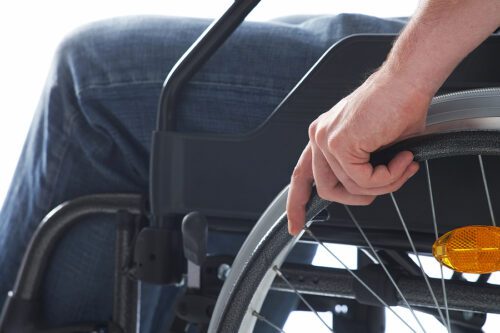
Denied SSDI for a Physical Injury? How to Prove You Can’t Work
Getting denied Social Security Disability Insurance (SSDI) benefits after suffering a serious physical injury can feel like adding insult to injury. You’ve been through enough—doctors’ visits, lost wages, medical bills—and now the Social Security Administration (SSA) has decided you’re still capable of working. It can be frustrating, especially when your day-to-day reality looks nothing like the denial suggests.
We want you to know that a denial doesn’t necessarily mean you’re out of options. Many people who experience a physical injury and can’t work right away may still qualify for SSDI after an appeal, especially if they’re able to provide stronger documentation. The key is showing—not just saying—that your condition makes it too challenging to perform substantial work. That starts with understanding how the SSA evaluates claims and what evidence might help strengthen your case.
Why the SSA Denies Physical Injury Claims
The SSA follows a structured process when deciding whether someone may qualify for disability benefits. It’s not enough to show you were hurt—you also must show that the injury limits your ability to work, not just in your previous job, but in any job that meets a certain income threshold (what the SSA calls “substantial gainful activity”).
Common reasons for denial might include:
- The medical records don’t fully explain your physical limitations.
- There’s a gap between your injury and your treatment.
- The injury is expected to improve within a few months.
- The SSA believes you may still be able to perform other types of work.
That last point surprises many people. If you’ve done physically demanding work your whole life and now can’t lift, bend, or stand for long periods, then it may seem obvious that you cannot continue. However, the SSA may not approve your claim if your application doesn’t clearly show that you can’t shift into a less demanding role, like desk work. If you are under 55, you are more likely to be denied, as the SSA may feel you can adapt to another form of employment.

How the SSA Decides If You Can Work
Once the SSA confirms you meet basic eligibility rules (like having enough work credits and not earning more than the monthly limit), your application moves through an evaluation process.
They determine whether you can still do the work you did before your injury and whether you may be able to do any other work based on your age, education, skills, and physical ability. This is where things get more complicated. Just because you used to be a construction worker doesn’t mean the SSA will automatically approve your claim if you can no longer lift 50 pounds. They might say you could work in a retail or clerical role unless your medical evidence shows otherwise.
Social Security also offers access to job retraining. For example, in Ohio, if you can work but not return to a former work, then you may be eligible to work with Opportunities for Ohioans with Disabilities.
Build a Stronger Case With the Right Medical Evidence
The SSA relies heavily on medical documentation. That means one of the best ways to support your appeal is to work closely with your doctors and make sure they clearly explain how your injury affects your daily life and your ability to work.
Your records to submit can include:
- Diagnosis and treatment history
- Surgical reports or imaging (MRIs, X-rays, CT scans)
- Prescribed medications and physical therapy
- Functional limitations: What you can and cannot do physically
Your doctor must include details about functional limitations. A diagnosis alone (like “herniated disc” or “fractured leg”) doesn’t paint the full picture. But when a physician writes that you can’t lift more than 10 pounds, can only stand for 15 minutes at a time, or can’t sit without pain for longer than an hour, that’s the kind of information the SSA uses to assess your work capability.
If your physician or physical therapist is willing, they may complete a residual functional capacity (RFC) form (SSA form HA-1151-BK). This document outlines what physical activities you can do, from walking and standing to reaching and handling small objects. RFC assessments can make a significant difference when reviewed alongside your medical records. But beware, you should make sure you know what the medical provider will say. Sometimes well-meaning providers fill the forms out incompletely or not realizing that if they have you able to sit, stand, and walking in combination 8 hours, they have just said you can work, even if they disagree that you can work.
How to Show You’re Not Able to Work
If your SSDI application was denied based on a physical injury, your appeal may need to focus on explaining how your condition prevents you from doing any kind of full-time work. That’s not always as simple as it sounds, especially if your medical records are vague or incomplete.
Here are some ways you could possibly reinforce your case:
- Request detailed records from your healthcare providers that show consistent, ongoing treatment.
- Ask your doctor to describe your functioning ability during a typical workday. Can you sit for eight hours? Walk short distances? Use your hands repeatedly? What can you lift? Do you have to elevate your legs? Do you need more than standard work breaks?
- Keep a personal log of how your injury affects your routine. This can help your attorney or representative better understand your situation and may support your case if you end up in a hearing.
- Consider vocational evidence that shows your previous job required physical tasks you can no longer perform. If the SSA believes you could transition to another field, documentation showing why that’s impossible can help.
Common Mistakes That Can Undermine Your Case
Too often, applicants are denied SSDI benefits not because they don’t qualify but because the paperwork doesn’t reflect their real limitations. If the SSA doesn’t see solid medical evidence showing that your injury significantly reduces your ability to work, they may deny the claim—even if you genuinely can’t hold a job.
Avoiding these pitfalls might make your appeal stronger:
- Not following up regularly with your doctor.
- Failing to explain how your symptoms affect your daily activities.
- Leaving out details about the side effects of medications.
- Assuming the SSA will “figure it out” from basic records.
- Not appealing within the 60-day window after receiving a denial.
If you’ve been turned down and believe your injury still keeps you from working full-time, you may want to consider filing an appeal rather than starting over. Appeals can take time, but approval may still be possible if your medical records support your case.
Legal Support May Help You Avoid Setbacks
Proving that you can’t work due to a physical injury involves more than just saying you’re in pain. It takes documentation, clarity, and attention to how the SSA evaluates claims. For many applicants, working with a disability attorney helps remove some of the guesswork. Attorneys familiar with SSDI rules may be able to identify gaps in the initial claim, request helpful evaluations from doctors, and build a case that addresses the SSA’s concerns.
You don’t have to handle everything alone, especially when recovering from an injury and trying to manage daily tasks. Getting qualified support can take some pressure off your shoulders and help you focus on your health while someone else handles the paperwork, follow-ups, and appeals process.
Get the Help You Need After a Denial
A denial doesn’t automatically mean you don’t qualify. If your physical injury makes it difficult—or impossible—to maintain full-time work, you may still have a chance to receive SSDI benefits through the appeal process. The sooner you act, the more options you may have.
Contact us right away (419) 782-9881 for a free consultation to discuss your legal options. Arthur Law Firm may be able to help you build a stronger case, gather the proper medical evidence, and help you navigate the SSDI appeals process with confidence.